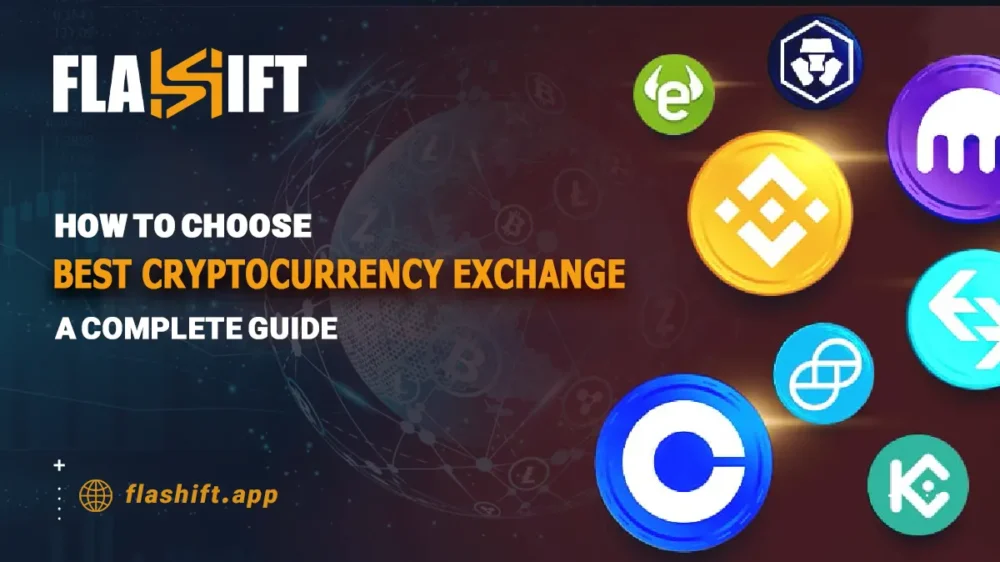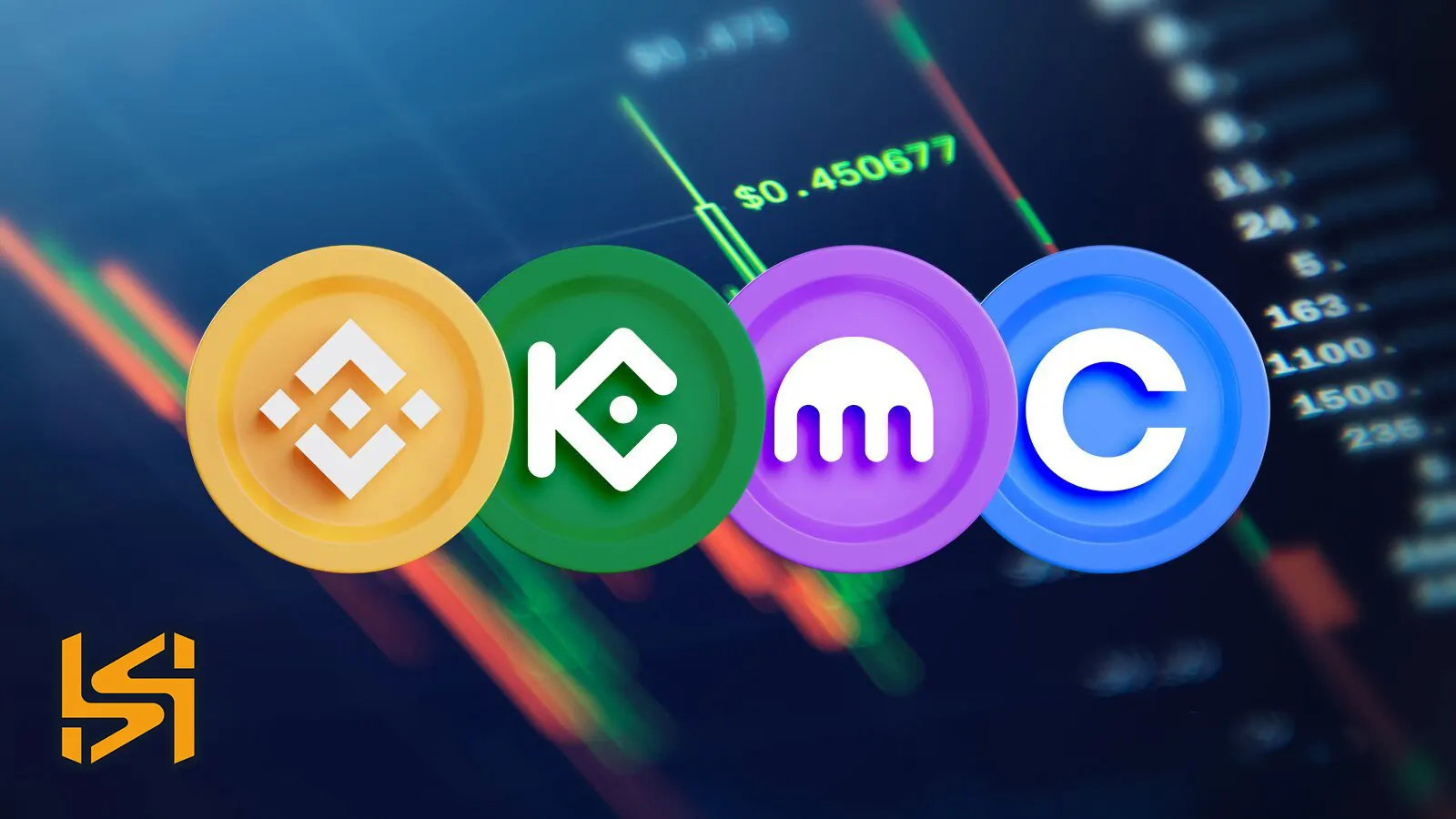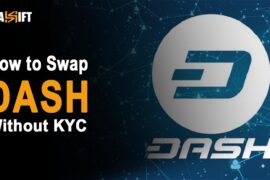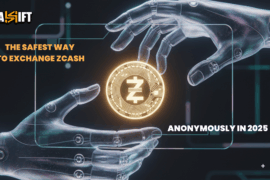How to Choose the Best Cryptocurrency Exchange | In the very fast-paced and fast-changing world of digital finance, choosing the best cryptocurrency exchange becomes one of the most relevant decisions for both professional and novice investors. It feels sometimes overwhelmingly hard to look through options provided by a huge variety of different platforms with their unique features, safety protocols, and pricing schedules. “How to Choose the Best Cryptocurrency Exchange: A Comprehensive Review” is designed to explain all that and give you information on how to make an informed choice.
In this review, we will dive deeper into critical factors—security, user experience, trading fees, and available assets—so that you have a better analysis of how to find the exchange that best connects with your trading needs and resonates with your investment goals. Whether you want to buy your first Bitcoin or get a reliable platform for advanced trading, this review will arm you with the proper insight to choose the right exchange.
For exchange Ethereum (ETH) to Bitcoin (BTC) in one second, Flashift is the easiest way.
Key Factors to Consider in a Crypto Exchange
While choosing the best cryptocurrency exchange, consider the key elements that would explain which option fits not only your trading requirements but also your security concerns and investment goals. The most important things that need to be taken into consideration while choosing an exchange are summarized in the following.
Security Features
The very first thing that a person should keep in mind while choosing any cryptocurrency exchange is the security features that it offers. Enter those exchanges that provide robust security measures in place, such as 2FA, cold storage of assets, frequent security audits, and encryption protocols. Look at their track record regarding security breaches and a general approach toward saving the funds of the users.
Their reputation and reliability
Check on the perception of the exchange within the crypto community. It means users’ feedback, opinions of experts, and reports of exposure to fraud or mismanagement in the past. Such events are important in that usually, choosing emerging exchanges is riskier than going for established ones with a history proven in times of reliability and transparency.
Fees and Costs
Most of the time, different exchanges charge for trading, withdrawals, and deposits. All these charges may hugely differ from one platform to another. Comparatively, look at the fee structures associated with different exchanges in terms of trading fees, maker and taker fees, deposit and withdrawal fees, and other hidden costs that may be involved. There can be a huge difference in net trading profit due to a better fee structure.
User Experience and Interface
This will help a lot if you are new to the world of trading in cryptocurrency. However, even in any other case, everybody would have liked a user-friendly interface. Thus, check out the user-friendliness, tools at your disposal, and intuitiveness. It is with efficient customer support, backed by a rich help center, that trader issues are responded to on such an efficient trading platform.
Available Cryptocurrencies
Not all exchanges support the same cryptocurrency. If you are looking to trade in some certain coin or token, make sure that the exchange has it listed. Some have huge varieties, while some are only major ones like Bitcoin and Ethereum.
Liquidity and Trading Volume
A high liquidity will ensure one’s ability to quickly execute trades at the desired price without having huge slippage. Check the volume of trading and the liquidity on the exchange chosen to be certain about its efficiency in getting in and out of positions.
Regulatory Compliance
This is whereby an exchange conforms to the various regulations and legal standards in which it has operations. A regulated exchange will tend to maintain industry standards more and thus give a higher degree of protection for your funds.
Means of Deposit and Withdrawal
Note down the various means through which deposits and withdrawals can be done on the exchange. Go through the kinds of fiat allowed, transaction fees, and time taken to process both deposits and withdrawals. The more, the merrier—it makes using your funds easy.
Customer Support
In case problems may occur—and you have some questions—then a reliable customer support team will be very helpful. Target exchanges that have multiple channels for support, such as live chat, email, and phone support. Responsive and proficient customer service will help rid you of problems with agility.
Extras
Some of the exchanges offer extra features like margin trading, staking, or lending services. If you’re thinking about needing this kind of option, ensure that the exchange can facilitate such activities and how risks and benefits play out in this case.
With these things in mind, you’ll be better equipped to choose the best cryptocurrency exchange that best suits your needs and, at the same time, increases your chances of going through a safe and efficient transaction process within the world of digital finance.
Liquidity and Market Depth
A critical yet often overlooked factor when choosing a cryptocurrency exchange is liquidity and market depth. Liquidity refers to how easily an asset can be bought or sold without significantly impacting its price. Exchanges with high liquidity provide tighter bid-ask spreads, ensuring that traders can execute orders at predictable and competitive prices. On the other hand, low-liquidity exchanges may suffer from slippage, where the final execution price deviates from the expected price—especially for large trades. To assess an exchange’s liquidity, examine its 24-hour trading volume, the number of active traders, and the depth of the order book for the cryptocurrencies you intend to trade. Selecting an exchange with deep liquidity ensures smoother transactions, reduces price volatility, and minimizes the risk of market manipulation.
Custodial vs. Non-Custodial Exchanges
Security in crypto trading goes beyond passwords and two-factor authentication—it extends to how your assets are stored. Custodial exchanges, like Binance and Coinbase, manage users’ funds on their behalf, offering convenience but also exposing them to risks such as hacks, regulatory seizures, or insolvency. In contrast, non-custodial exchanges, including decentralized exchanges (DEXs) like Uniswap, allow traders to retain full control of their private keys, minimizing counterparty risks. While non-custodial exchanges enhance security and privacy, they often come with less user-friendly interfaces and fewer fiat on-ramp options. For optimal risk management, traders should use custodial exchanges for active trading but withdraw long-term holdings to cold wallets. By understanding these trade-offs, investors can make informed decisions that align with their security and convenience needs.
Read More: Top Cryptocurrencies by Growth in 2024: A Comprehensive Guide
Security Features of Top Exchanges
While there are critical aspects related to the evaluation of the security features for the best cryptocurrency exchange, it is an essential attribute in the world of cryptocurrency trading. Security in trading has become much more crucial than ever because of the unpredictability of the industry and its complete protection against probable enemies.
First and foremost, leading exchanges never fail to emphasize strong encryption methods in ensuring user data protection. On the side of data being sent over the line between users and the platform, top exchanges use robust SSL/TLS encryption to avoid any cyber threat. This makes sure that all the information passed is highly secure and cannot be accessed by unauthorized parties, including log-in details and transaction data.
Another critical aspect of security in this implementation includes 2FA. This forms an additional layer of security in that, upon login, a user shall be required to log in using another form of verification other than their password; in most cases, this would be a code sent to one’s mobile device or generated via an authentication app. This vastly reduces the possibility of attackers forcefully gaining access to an account.
This is a common practice the leading exchanges take to ensure most of the users’ funds are kept safe. In contrast to hot wallets that are connected online and hence are prone to cyber-attacks, cold storage keeps cryptocurrencies offline in an extremely secure, physically isolated environment. This approach minimizes the risk of hacking and theft.
Regular security audits are also among the major stipulations for reputable exchanges. The security protocols are checked by independent security firms for any probable vulnerabilities regarding the security of the platform. These audits, with regular updating and patching, make the exchange resilient to rising threats.
Further, leading exchanges do have insurance policies that guard against potential losses in the case of a security breach. While insurance is not a solution per se against thefts, it does bring extra financial security to the interest of users in case of a major security incident.
Further, the internal security measures for the exchange itself are strong, having access controls, monitoring systems, etc., to help deter insider threats and unauthorized access of operations. This would prevent access to sensitive information and systems from unauthorized staff only.
Besides, legitimate exchanges openly share their security practices and the history of breaches, if any, to engender trust among themselves and their users. Most importantly, transparency allows users to pass judgment on the standards of high security maintained by the platform.
Security features—like encryption, two-factor authentication, cold storage, frequent audits, insurance, internal controls, and transparency—make for an environment secure for trading and investment by users on the best cryptocurrency exchange.
For Exchange USDTERC20 to TRX in one second, Flashift is the easiest way. The best rate is guaranteed among various services by our AI-driven system.
Comparing Trading Fees and Costs
The best cryptocurrency exchange charges certain competitive trading fees and costs based on the following key factors:
- Trading Fees: Normally, this will be divided into maker fees and taker fees.
- Maker Fee: This will be charged when customers provide liquidity to the market with an order that doesn’t fill immediately.
- Taker Fee: This would be charged if customers take liquidity from the market using an order matching an outstanding order.
- Deposit and Withdrawal Fees: These are taken for deposits into or withdrawals from the account on the exchange. They differ extremely based on the currency and method used.
- Spread: It is the gap between the bid price buying and ask price selling. There are wide spreads, which some exchanges may have and which can affect your net cost of trading.
- Extra Fees: These can be related to margin trading, futures trading, staking, or some other special services that an exchange can offer.
The following can be a tiny summary of the best cryptocurrency exchange was charging for its operations in the time these data were valid:
- Binance
- Trading Fees: Maker 0.10%, Taker 0.10%. Discounts apply for high-volume traders or those paying with Binance Coin.
- Deposit Fees: Almost free for cryptocurrencies; little fees for fiat deposits.
- Withdrawal Fees: Depends on the cryptocurrency.
- Coinbase
- Trading Fees: Relatively high compared to other exchanges, typically 0.60% maker and 0.40% taker on Coinbase Pro, though lower fees on Coinbase’s advanced platform.
- Deposit Fees: Bank transfers are free; however, credit/debit card deposits require some fees.
- Withdrawal Fees: Little fees for fiat withdrawals.
- Kraken
- Trading Fees: 0.16% maker and 0.26% taker. The fees decrease with higher volumes of trading.
- Deposit Fees: Free for crypto deposits; might be a small fee for bank transfer in fiat.
- Withdrawal Fees: Depending on the currency, they differ.
- Bitfinex
- Trading Fees: It charges 0.10% maker and 0.20% taker. Volume-based discounts apply.
- Deposit Fees: Deposits in cryptocurrencies are generally free; a few fiat deposits have some fees.
- Withdrawal Fees: Dynamic, although there are a few fixed fees for different fiat currencies.
- Gemini
- Trading Fees: 0.35% taker and 0.25% maker fees, with a discount structure in place for trading volume.
- Deposit Fees: Free for crypto deposits and variable fees for fiat deposits.
- Withdrawal Fees: Dynamic depending on the currency.
- KuCoin
- Trading Fees: 0.10% maker and 0.10% taker; discounts if one is using KuCoin Shares.
- Deposit Fees: Normally free for cryptocurrencies; some fees for fiat deposits
- Withdrawal Fees: Vary by cryptocurrency
- OKX
- Trading Fees: 0.08% maker and 0.10% taker, with possible discounts for trading volume and token usage
- Deposit Fees: Crypto deposits are usually free, while fiat deposits attract some fees
- Withdrawal Fees: Vary with cryptocurrency
For exchange cryptocurrency at the best rate, visit Flashift website, create a registration-free transaction and take advantage of a secure and speedy experience.
Key Considerations:
- Volume Discounts: Volume discounts on most digital assets exchanges for higher trade volumes.
- Complex fee structure: Some exchanges have tiered fee structures, particularly because they consider trading volume or account holdings.
- Liquidity and Market Depth: The low fees are always compensated for with poor liquidity or wider spreads, increasing trading costs.
You will also need to consider other factors in an exchange, such as security, customer support, ease of use, and availability of features needed by the business.
User Experience and Interface
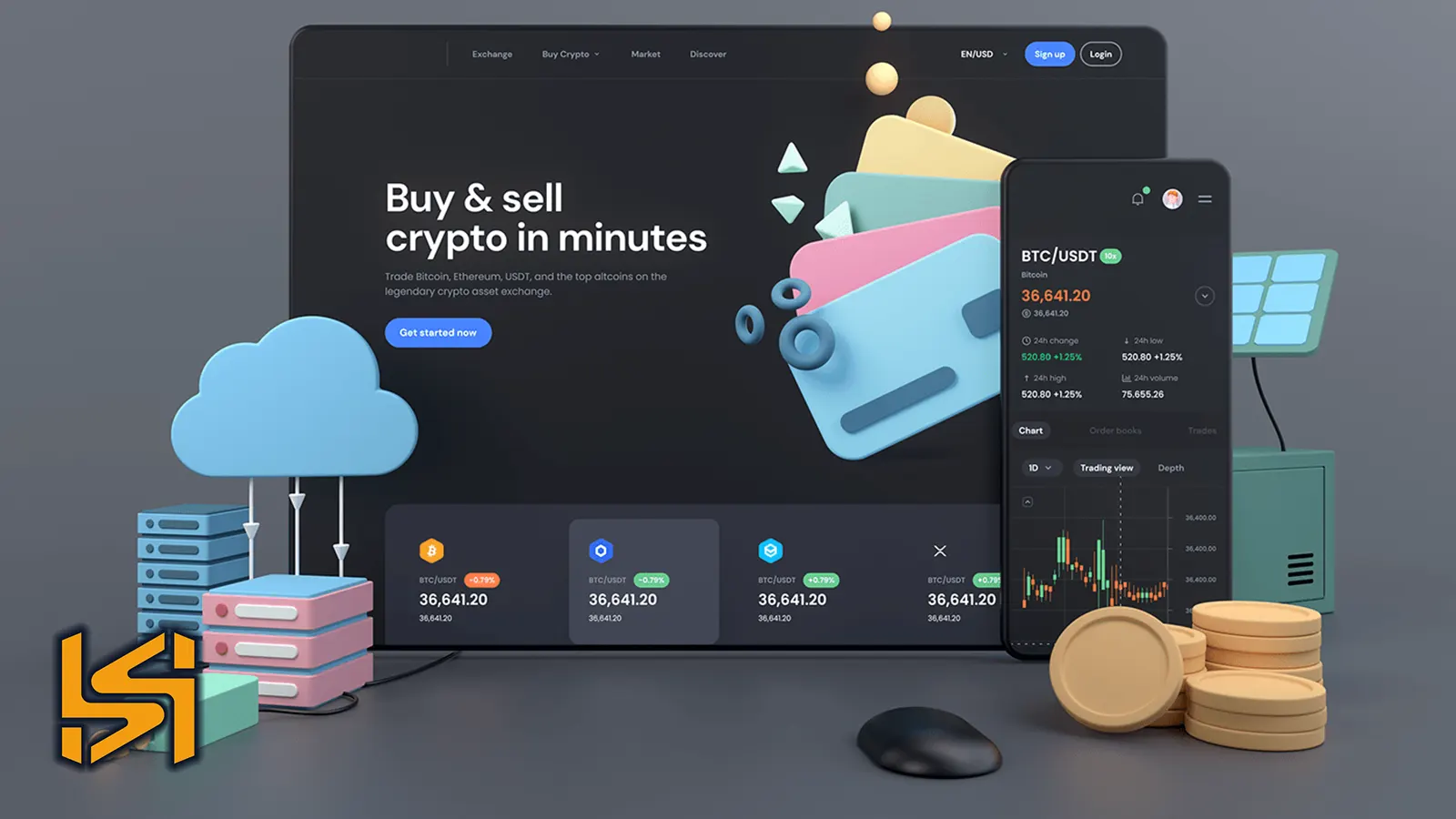
The user experience and the interface can make all the difference in trading efficiency and satisfaction. Here’s a breakdown of how some top exchanges stack up for UX and interface:
- Binance
- Interface: Binance has a feature-rich, full interface that might be overwhelming for a beginner. Still, it is highly customizable and includes a basic view and an advanced trading view that the user can switch between according to his comfort level.
- User Experience: The system is well-known for being fast and responsive. Of course, Binance also provides other trading options, which include spot, futures, and margin trading. Its mobile application is also powerful, with most of the capabilities from the desktop experience duplicated in this form factor.
- Coinbase
- Interface: It is known for the cleanliness and intuitiveness of its design; hence, it is very friendly to beginners. Its interface is pretty straightforward to move around options related to buying, selling, and generally managing crypto.
- User Experience: The Coinbase exchange is very basic and user-friendly for new investors. On the other hand, the Coinbase advanced trading platform, Coinbase Pro, has more features and a more complicated interface that suits professional traders.
- Kraken
- Interface: Kraken has an interface that might look a little archaic compared to the other exchanges. It has various tools and charting options, which may require learning for users new to it.
- User Experience: While the platform is reliable and secure, it has a solid trading experience once you get used to the layout. The mobile app, in general, is well-regarded but has a steeper learning curve as well.
- Bitfinex
- Interface: It has an advanced interface; it targets professional traders with extensive charting tools, featuring customizable layouts that might overwhelm a beginner.
- User Experience: Advanced trading suite integrated with all main features. The platform is robust but takes time to get used to. The mobile application is functional but not as advanced as the desktop version.
- Gemini
- Interface: What can be said about the interface of Gemini is that it’s clean, user-friendly, and simplicity-driven. It is made such that it should be accessible to both new and professional traders. The navigation is extremely easy, and the information is given.
- User Experience: The platform is security- and compliance-driven, and the trading experience is smooth and intuitive. It also has a fully-featured mobile application that provides a seamless user experience with the desktop site.
- KuCoin
- Interface: The KuCoin interface is modern, full-featured, and features comprehensive charting and trading tools. This interface is well-balanced between complexity and usability, with different modes available for various levels of users.
- User Experience: The exchange is known for its high performance and multiple options to trade in. The mobile app is robust. It has nearly the same experience as the desktop platform, good in functionality and usability.
- OKX
- Interface: OKX has a sleek, highly functional interface with a lot of tools around trading, including advanced charting and market analysis features. It has basic and advanced views.
- User Experience: The platform is designed with efficiency in mind. It offers an all-rounded trading experience that focuses on speed and ease of use. Its mobile application offers a comprehensive experience consistent with the desktop version itself.
Key UX/UI Features to Consider:
- Navigation: Look for an interface that assists you in searching for trades and accomplishing the actual trade.
- Customization: Advanced traders may need fully customizable dashboards, along with all possible trading views.
- An individual will require a robust mobile application for trading on the go.
- Help and Support: Any good UX generally makes available customer support and resources, which help guide through the process.
As such, selecting an exchange often comes down to a trade-off between ease of use and different features, so you may want to experiment with a few different platforms to get a feel for the kind of interface that best suits you.
Support and Customer Service
Support can be a critical component of the best cryptocurrency exchange experience, especially when you have problems or need help. Here is a review of support and customer service features from some of the top exchanges:
- Binance
- Support Channels: The exchange offers multiple channels for support, including an extensive help center and live chat support. Email support is also available.
- Response Time: Response times vary depending on the nature of your query. Live chat seems to go a bit faster, whereas email support might take a bit longer.
- Support Quality: The help provided by Binance is quite effective overall; however, it can be patchy and, at times, has mixed reviews. Resolving major issues can take a while, especially when there is large traffic.
- Additional Resources: Hefty knowledge base, tutorials, and community forums.
- Coinbase
- Support Channels: Coinbase has a help center, email, and live chat for pro users.
- Response Time: Coinbase’s support can be slow at times, especially during busy moments. It is known that sometimes their email support has extremely long wait times.
- Support Quality: Generally professional, though inconsistent. Users’ feedback of the fact that not all responses point towards quick solutions of problems.
- Additional Resources: Most beautiful help centre with articles and FAQs; community support via forums.
- Kraken
- Support Channels: Email support, live chat, and a help center with huge documentation.
- Response Time: Live chat is usually much faster; however, emails may take a bit longer. Kraken’s response times to support have improved over time.
- Support Quality: The support at Kraken is very detailed and professional; however, at times, it has slow response times during peak moments.
- Additional Resources: Proper help centre and educational resources.
- Bitfinex
- Support Channels: A rich help center, e-mail, and live chat.
- Response Time: Response time varies. Live chat seems to answer queries faster than e-mail.
- Support Quality: Opinions are divided. Some people have reported delays, while for others, support was quite decent.
- Additional Resources: Knowledge base and community forums.
- Gemini
- Support Channels: At Gemini, there is a help center, e-mail, and live chat available.
- Response time: Fast; live chat most of the time gives real-time solutions.
- Support quality: Frontline customer support is generally highlighted for its high quality and responsiveness. Most users appear to appreciate Gemini’s ability to resolve issues.
- Extra resources: Huge knowledge base, educational resources, and community support.
- KuCoin
- Support channels: KuCoin has a help center, email, live chat, and social media channels for support.
- Response time: Live chat support could get a little faster, while email support might just be slow.
- Support Quality: Generally effective; however, there are several user reports that experiences may vary. The quality of support can be case-dependent, depending on how complex the matter is.
- Additional Resources: Help center, FAQ section, educational material.
- OKX
- Support Channels: OKX offers its customers support via its help center, by email, and through live chat.
- Response Time: Overall, it has good customer support responsiveness, especially with live chat.
- Customer Support Quality: OKX has responsive and effective customer support; users generally enjoy good experiences with them.
- Extra Resources: Extensive help center, FAQs, and tutorials.
Key Factors When It Comes to Support Assessment:
- Availability: Support channels available around the clock will be particularly helpful in case you need it during odd hours.
- Response Time: Quick response times are critical in times of urgent issues needing resolution.
- Resolution Quality: Effective and helpful are more important than fast.
- Additional Resources: Oftentimes, a well-maintained help center and resources for education can answer a lot of questions without direct support being needed.
As one chooses an exchange, if possible, it is worth trying out their customer support, or recent user reviews can at least be read to determine the current quality and reliability.
Reviews of Popular Crypto Exchanges
Reviews of popular and best cryptocurrency exchanges greatly differ per each user’s experience, trading needs, and expectations from the service. Here is a summary of the general feedback that users and experts have given for some of the top exchanges:
- Binance
Pros:
- Wide Range of Cryptocurrencies: It features many types of different cryptocurrencies and trading pairs.
- Low Fees: In general, trading fees at Binance are low, with further discounts for high-volume traders or those using Binance Coin (BNB).
- Advanced Features: Comprehensive trading suite that includes futures, margin trading, staking, and more.
Cons:
- Complexity: With the number of features this platform has, it can be overwhelming for any inexperienced user.
- Customer Support: It has received negative reviews regarding response times and the quality of customer support.
- Regulatory Issues: Binance has had some problems with regulatory bodies across many countries, consequently affecting the user experience.
- Coinbase
Pros:
- User-Friendly: Well-known and famous for its cleanliness and intuitive interface, making it perfect for any beginner.
- Regulation and Security: Emphasis on regulatory compliance and security features is strong.
- Educational Resources: Provides lots of educational content and tools to learn about crypto.
Cons:
- Higher Fees: Higher trading fees compared to their immediate competitors, especially for small trades.
- Customer Support: Slow response times and issues resolved via email support have been reported by users.
- Kraken
Pros:
- Security: It holds great regard for security and has a very decent reputation inside the crypto community.
- Diverse services: It offers a long portfolio of services, from trading with margin positions on spot and futures markets to staking.
- Fees: Very competitive fees with higher trade volumes providing discounts.
Cons:
- Interface: It may look outdated, and there might be a steep learning curve for new users on this platform.
- Customer Support: Response is slow, especially in times of high volume.
- Bitfinex
Pros:
- Advanced Trading Feature: It offers a wide range of advanced trading features and options. This includes margin trading, etc., and even derivative trading.
- Liquidity: Highly liquid, large trading volumes.
Cons:
- Complex Interface: Advanced features may overwhelm the beginner.
- Customer Support: The support responsiveness and effectiveness are poor.
- Gemini
Pros:
- User Experience: A clean and intuitive interface, focusing on security and regulatory compliance.
- Customer Service: Generally, very well-received reviews for the responsive and knowledgeable support team.
- Regulation: There is a very strong emphasis on compliance and security.
Cons:
- Fees: Compared with other exchanges, fees are a bit costly. This hurts small trades the most.
- Cryptocurrency Selection: Fewer crypto options than some of the competition.
- KuCoin
Pros:
- Extensive Cryptos: Has a huge collection of cryptocurrencies and trading pairs.
- Low Fees: Competitive trading fees that are discounted if one uses KuCoin Shares.
- Advanced Features: It has a variety of trading options available, including futures and margin trading.
Cons:
- Customer Support: The time taken to answer queries by the support is claimed to be very slow by many users.
- Regulatory Concerns: KuCoin is under investigation in some jurisdictions at the moment, and thus, people are showing less interest in using it.
- OKX
Pros:
- Full-Featured: It has a wide variety of trading options available, including spot, futures, margin trading, and staking.
- Low Fees: The trading fees here are competitive, and for high-volume traders, it offers even further discounts.
- User Interface: A very modern and user-friendly interface with various tools available.
Cons:
- Customer Support: Some have said it is very effective, while others have said that support responds more slowly.
- Complexity: For first-timers, it may get quite overwhelming because the platform has so many features.
Summary
Binance: High praise for features and low fees, with bad reviews on the user interface and customer support.
Coinbase: Praises include user-friendly design and a high regard toward regulatory compliance; it is noted, however, for higher fees and slower support.
Kraken: Security is a plus, having lots of services for its users, but with an outdated user interface and very slow-moving customer support.
Bitfinex: Advanced trading features and high liquidity are available, but it could be overwhelming for new users.
Gemini: Known is their minimalistic UI and customer service, while it also hosts higher fees and fewer crypto offerings.
KuCoin: A Great number of cryptos at low fees. On the other side, there’s mixed sentiment surrounding their customer support.
OKX: This is a fully functional exchange, which has low fees but has mixed reviews in terms of customer support and can be somewhat complex. Consider what is most important to you in an exchange: fees, security, ease of use, or support. It’s often beneficial to try out a few exchanges to find the one that best meets your needs.
For exchange cryptocurrency at the best rate, visit Flashift website, create a registration-free transaction and take advantage of a secure and speedy experience.
How to Exchange or Swap Cryptocurrencies with the Lowest Fees
Flashift.app stands as a par excellence platform when it comes to furnishing the most state-of-the-art solutions to the blockchain and digital currency community. It aids them in the easy exchange of a diverse array of cryptocurrencies across varied blockchains.
By building strategic partnerships with top decentralized exchanges, Flashift empowers its users with the best market prices. Built-in as a sophisticated aggregator, it hunts for offers, organizes them properly, and presents the best rate before the end user in a very user-friendly interface.
High-performance artificial intelligence sets the Flashift app apart from the competition. It makes a transaction with its specialized tags, scanning all integrated partner exchanges in search of the best available options. Four tags enable guidance toward the best recommended option: Best Rate, Best in KYC, No Hold, and Recommended.
FAQs
- What Key Features to Look for in a Crypto Exchange?
Security should be the essential feature while selecting a crypto exchange. Exchanges with powerful features of security, like 2FA and cold storage, are particularly advisable. In addition, among the most vital things one has to consider would be the fee structure: trading fees, deposit and withdrawal fees, and other extra costs that might be involved. Ensure it serves the volume of your trade and matches your financial strategy.
- What security features should one look for in a top crypto exchange?
Exchanges at the top of the crypto list should have strong security features, such as two-factor authentication, to add a layer of protection instead of just a password. Most user funds should also be kept in offline storage to protect against online hacks. Regular security audits and compliance with industry standards are also critical pointers toward the safety of the platform.
- What type of fees should I compare across when choosing a crypto exchange?
When comparing the best cryptocurrency exchanges, one has to consider the trading fees since they could change with your trading volume and activity. Other deposit and withdrawal fees also have to be kept in mind, as they may differ based on the cryptocurrency and methods of payment involved in the transaction. The others may charge hidden fees or extra costs for specific services.
- How do trading fees impact my overall trading costs?
Trading fees increase the cost I will pay for each transaction. Such costs can add up to a great extent in the case of frequent traders and affect profitability. Lower fees or even fee structures, which discount high-volume trading, will help you reduce costs and maximize your trading efficiency.
- What makes a crypto exchange’s user interface effective?
An effective user interface of the crypto exchange should make it easy for users to navigate the platform, execute trades, and, if needed, self-educate on how to use the platform. It should also give customization options so that users can adapt dashboards and views on trading to their personal preferences or trading styles.
- What are some other key factors in good customer support at a crypto exchange?
Equally important in good customer support are availability and 24/7 support able to address an issue the minute it occurs. Fast response times, again, are very important via live chat in solving problems fast. Good customer service needs to assist quickly, helpfully, and thoroughly.
- Where can I find legitimate reviews of popular crypto exchanges?
Reliable reviews of popular crypto exchanges are found with elaborate analyses and ratings in crypto news websites like CoinDesk and CoinTelegraph. Community forums such as Reddit and Bitcointalk are very instrumental in user experiences and discussions of various exchanges.
- What is the Flashift app?
Flashift.app is an aggregator application for instant exchange deals, consolidating the rates of various exchanges into one platform. It provides the ability to view all the options for swapping your desired cryptocurrency in a single location.
You can swap cryptocurrencies between chains with no wallet connection or registration, which otherwise is impossible in traditional decentralized exchanges.


